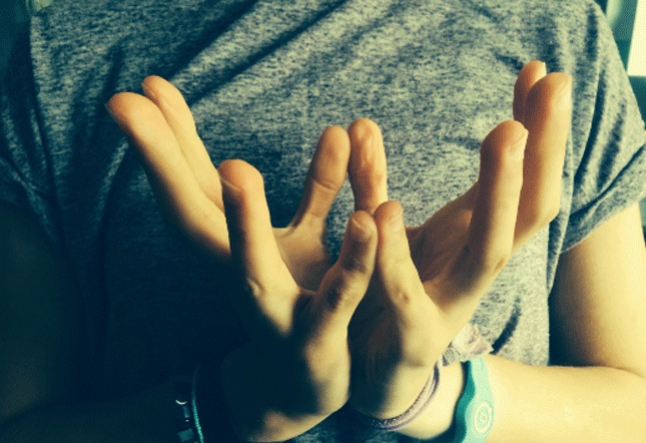yogic wisdom: 5 unique pain-relieving practices

discover the ancient Indian secrets of soothing your aches, pains and strains
The energies of the body, mind and emotions are intricately connected. The underlying cause of chronic physical pain is often the accumulation of stagnant emotional energy which has become congested due to emotional or mental trauma.
The underlying cause of acute physical pain is often the result of depleted energy within a particular part of the body which creates the susceptibility for dis-ease and injury.
Traditional Indian pain-relieving practices assist in releasing the accumulated energy and restoring the energy balance, which strengthens the tissues to heal and prevent pain.
Here are 5 self-healing practices to relieve pain:
Copper-charged water
Traditionally, copper-charged water was taken daily as a cleansing tonic to balance the body and mind.
Copper is an essential mineral required by the body which strengthens the nerves and possesses anti-inflammatory and pain-relieving properties.
• To prepare copper-charged water, thoroughly clean a pure copper container with warm water, fresh lemon juice and salt.
• In the evening, fill the copper container with two glasses of tap or filtered water.
• Cover with a clean cloth.
• Leave overnight at room temperature to allow the water to absorb the copper energy.
• Drink one glass in the morning on an empty stomach.
• Do not refrigerate, and drink the second glass before lunch.
Herbal poultice
Moistened dried or fresh herbs are applied to the skin over an area of pain to relax the muscles, increase the blood flow, draw out impurities and alleviate pain and swelling.
Common poultices include:
• Ginger Root Powder Poultice for stiffness, muscular pain and cold-related pain.
• Turmeric Root Powder Poultice for inflammatory joint pain and heat-related pain.
• Sandalwood Powder Poultice for pain related to skin swellings and migraine headaches.
• Holy Basil Powder Poultice for arthritic, rheumatic, nerve and muscle aches, pains and sprains.
Application:
• Apply a thin layer of ghee or cold-pressed sesame oil to the affected area to protect the skin.
• Add warm water to the powdered herb to make the consistency of a thick paste.
• Apply a thick layer of the warm herbal paste to the affected area.
• Cover with a bandage and leave in place for a few hours or overnight.
• Remove in the morning, wash with warm water and apply a fresh poultice if required.
[PARTITION]
Color healing
Specific colors are absorbed by the sun to heal energy imbalances of the body and mind.
• Red assists with healing pain associated with the muscles, poor circulation, and cold-related pain.
• Green assists with healing pain associated with the nerves, the skin and sciatica.
• Blue assists with healing pain associated with inflammation and heat-related pain.
• Yellow assists with healing pain associated with the stomach, liver, pancreas and intestines.
Application:
• Apply a thin layer of cold-pressed sesame oil to the area of pain.
• Place a glass of the desired color in the sunlight in such a way that the sun’s rays are absorbed by the glass and fall on to the area of pain.
• The area should be unclothed and free of sunscreen.
• Ensure the rest of your body is kept warm.
• Absorb the concentrated rays for fifteen minutes in the morning sun and fifteen minutes in the evening sun.
• If a colored glass is not available, double wrap cellophane paper of the desired color around a clear glass.
Mudra Healing
Healing the body, mind and emotions through simple hand gestures.
The Vata Nashak Mudra strengthens the entire body which alleviates pain.
• Place the tip of your index finger and middle finger at the base of your thumb.
• Place your thumb over your index finger and middle finger and press down lightly.
• Relax and extend your ring and little finger.
• Practice with both hands for fifteen minutes, three times a day.
[PARTITION]
Acupressure Healing
Empowering the body’s vital energy to initiate self-healing and restore balance and harmony.
Press the associated pain-relieving acupressure points for a few minutes, three times a day.
• Abdominal Pain – firmly massage the entire web between each thumb and index finger.
• Appendicitis Pain – firmly massage the area on the middle of each calf.
• Arthritis Pain – firmly massage the tips and the joints of the fingers and toes.
• Back Pain – firmly massage the index fingers and the back of each wrist.
• Chest Pain – gently massage the center of the breast bone using small circular motions.
• Ear Pain – massage the base of the little and ring fingers where they meet the palm.
• Eye Pain – massage the base of the middle and index fingers where they meet the palm.
• Gallstone Pain – firmly press the area on the outer leg, midway between the ankle and knee.
• Hip Pain – massage each of the little toes and the outer edge of each heel.
• Intestinal Pain – firmly press the center of the chin and the outer side of each little finger.
• Knee Pain – firmly massage the flesh area behind each knee and the heels.
• Neck Pain – gently massage the base of each thumb and the base of each big toe.
• Sciatica Pain – firmly massage the heels and each side of the Achilles tendon.
• Throat Pain – gently massage the web between each big toe and second toe.
• Tooth Pain – firmly press the fingertips of the left hand against the fingertips of the right hand.
Slow down, breathe deeply and bring your awareness within. Listen to your body’s needs as pain can often be relieved through visualization or meditation which assists in releasing the emotional aspect and replenishing depleted energies which initiates the self-healing response.
Read next >> yogic wisdom: remedies to heal the symptoms of menopause
